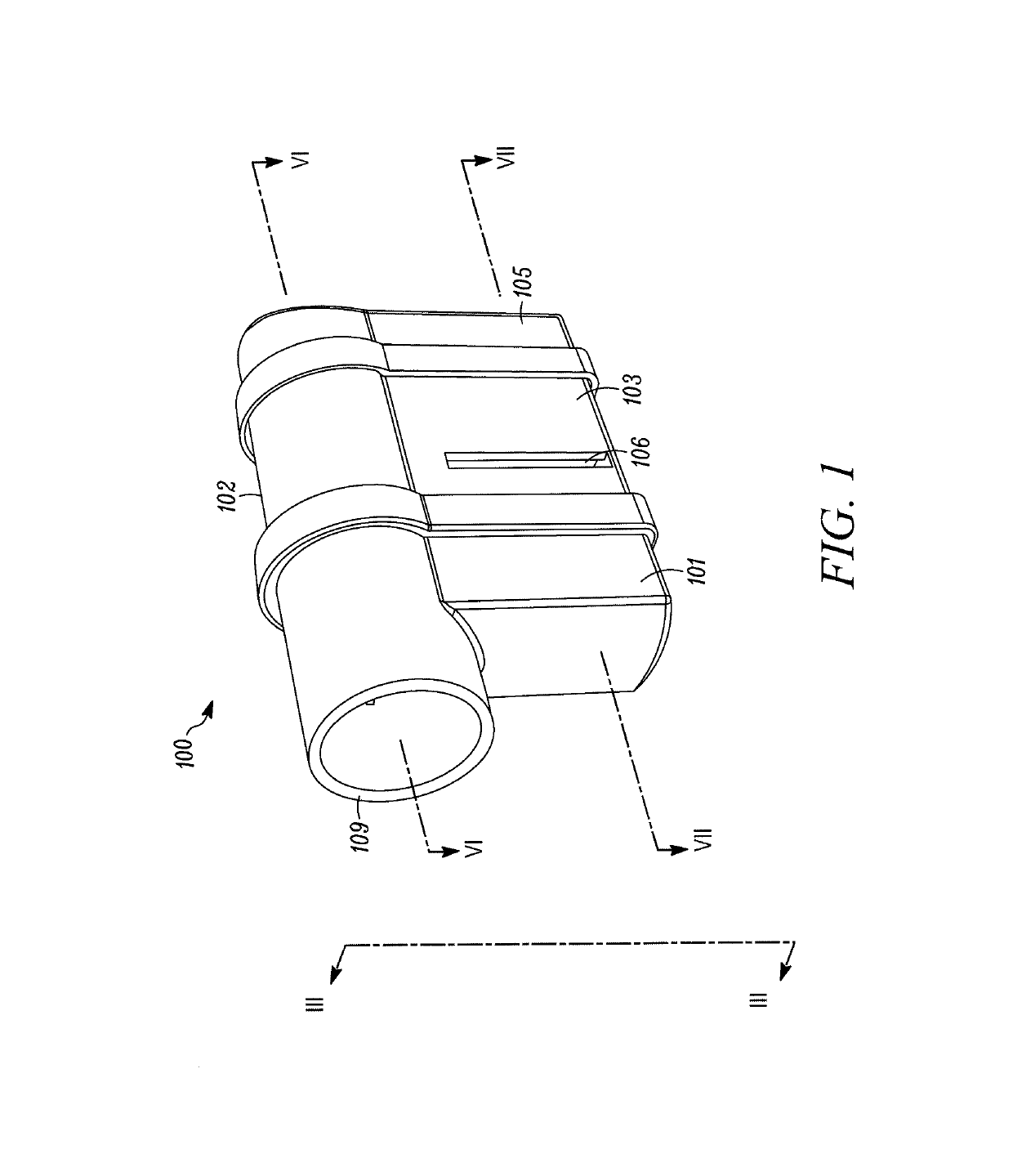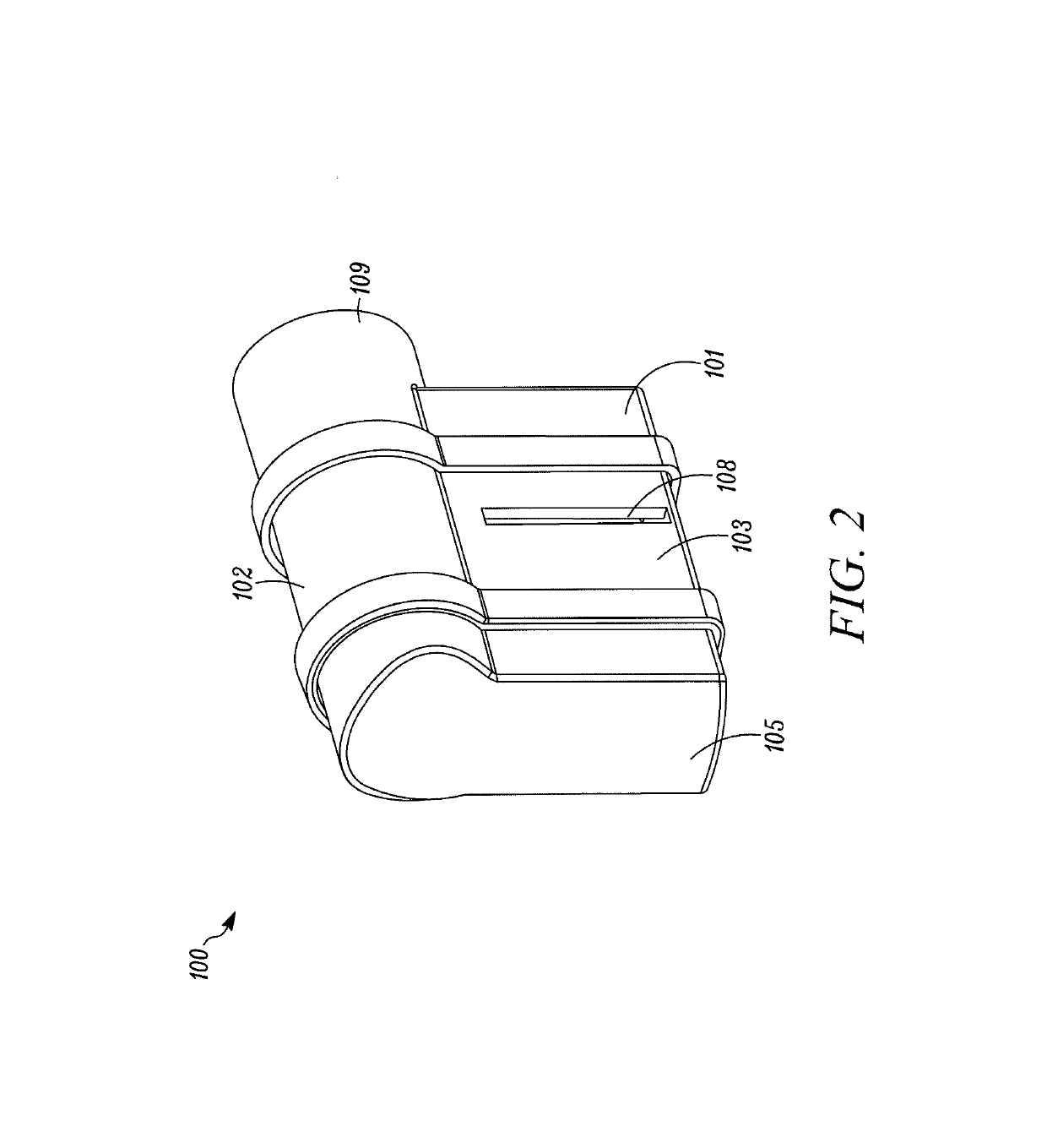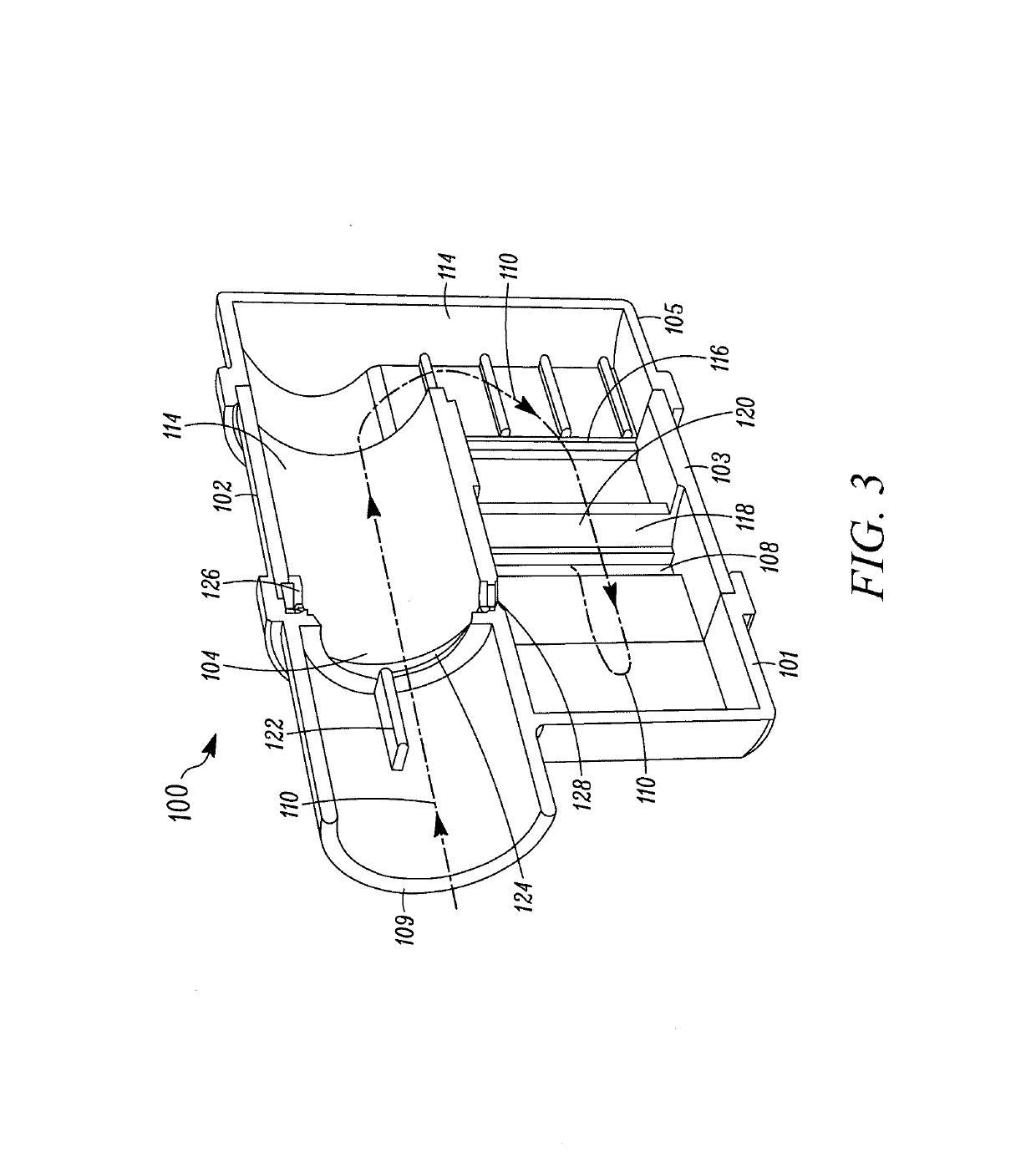Pressure indicator for an oscillating positive expiratory pressure device
a positive expiratory pressure and pressure indicator technology, which is applied in the direction of medical devices, tracheal tubes, other medical devices, etc., can solve the problems of affecting the bronchial obstruction, splitting open obstructed airways, and insufficient single cough to clear obstructions, so as to achieve the effect of reducing oscillations
- Summary
- Abstract
- Description
- Claims
- Application Information
AI Technical Summary
Benefits of technology
Problems solved by technology
Method used
Image
Examples
embodiment
Third OPEP Embodiment
[0143]Turning to FIGS. 35-37, another embodiment of an OPEP device 300 is shown. The OPEP device 300 is similar to that of the OPEP device 200 in that is selectively adjustable. As best seen in FIGS. 35, 37, 40, and 49, the OPEP device 300, like the OPEP device 300, includes an adjustment mechanism 353 adapted to change the relative position of a chamber inlet 304 with respect to a housing 302 and a restrictor member 330, which in turn changes the range of rotation of a vane 332 operatively connected thereto. As previously explained with regards to the OPEP device 200, a user is therefore able to conveniently adjust both the frequency and the amplitude of the OPEP therapy administered by the OPEP device 300 without opening the housing 302 and disassembling the components of the OPEP device 300. The administration of OPEP therapy using the OPEP device 300 is otherwise the same as described above with regards to the OPEP device 100.
[0144]The OPEP device 300 compri...
first embodiment
of a Pressure Indicator
[0161]Turning to FIGS. 53-56, a first embodiment of a pressure indicator 400 is shown. In general, the pressure indicator 400 includes a body 402, a conduit 404 extending from the body 402, a plug 406 positioned along and inserted into the conduit 404, and an instrument for measuring pressure in the form of a manometer 408 positioned at an outlet of the conduit 404.
[0162]The body 402 may be sized and shaped for integration with existing OPEP devices, for example, as shown in FIG. 54, with the mouthpiece 309 of the OPEP device 300. In this example, the body 402 is comprised of 22 mm ISO male / female conical connectors shaped and sized to connect to the mouthpiece 309 of the OPEP device 300.
[0163]Extending from the body 402 is a conduit 404 configured to transmit a pressure from within the OPEP device 300 to the manometer 408. An inlet 405 permits a pressure within the body 402 to pass into the conduit 404. As shown, the conduit 404 extends away from the body 402...
second embodiment
of a Pressure Indicator
[0170]Turning to FIGS. 57-59, a second embodiment of a pressure indicator 500 is shown. In general, the pressure indicator 500 includes a body 502, a conduit 504 extending from the body 502, a cap 506 positioned along the conduit 504, and an instrument for measuring pressure in the form of a manometer 508 positioned at an outlet of the conduit 504.
[0171]The body 502 may be sized and shaped for integration with existing OPEP devices, for example, as shown in FIG. 58, with the mouthpiece 309 of the OPEP device 300. In this example, the body 502 is again comprised of 22 mm ISO male / female conical connectors shaped and sized to connect to the mouthpiece 309 of the OPEP device 300.
[0172]Extending from the body 502 is a conduit 504 configured to transmit a pressure from within the OPEP device 300 to the manometer 508. An inlet 505 permits a pressure within the body 502 to pass into the conduit 504. As shown, the conduit 504 extends away from the body 502 only a shor...
PUM
 Login to View More
Login to View More Abstract
Description
Claims
Application Information
 Login to View More
Login to View More - R&D
- Intellectual Property
- Life Sciences
- Materials
- Tech Scout
- Unparalleled Data Quality
- Higher Quality Content
- 60% Fewer Hallucinations
Browse by: Latest US Patents, China's latest patents, Technical Efficacy Thesaurus, Application Domain, Technology Topic, Popular Technical Reports.
© 2025 PatSnap. All rights reserved.Legal|Privacy policy|Modern Slavery Act Transparency Statement|Sitemap|About US| Contact US: help@patsnap.com



